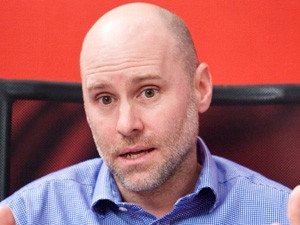
Virtualisation has been a hot topic that has regularly featured on Gartner's Hype Cycle over the years. Consequently, the first question ITWeb posed to the assembled experts dealt with this issue: has the technology realised the savings and performance benefits promised early on in the hype cycle?
First to jump into the fray is Microsoft's Johannes Kanis, suggesting that mass adoption is only really beginning now as the mid-market and small business start to implement the tools and technology. Dell's Kobus de Beer adds that demand is growing in certain market segments, and suggests the conversation with prospective customers should move on from simple ROI to examine the other benefits virtualisation can deliver to enterprises of all sizes.
Lourens Swanepoel of Avanade believes server virtualisation to be reasonably mature and well-understood, but says the same cannot be said for desktop virtualisation. IBM's Ian Flanagan agrees, noting that with regard to desktop virtualisation, the market is confused and the value isn't yet clear for small or large businesses. "Large businesses are concerned more by BYOD... but are looking at desktop virtualisation as a way of mitigating that," he adds.
Adding complexity
Avi Mistry of Intel notes that desktop virtualisation implies application virtualisation, and raises the complexities around tablets and smartphones and other form factors that require mobility. By contrast, he says: "Server virtualisation offers consolidation and containment so it's an easy business model."
CA Southern Africa's Gareth James agrees: "In many senses, server virtualisation is an easy thing to manage because it has a single purpose, but if you try to drag a virtual desktop into a data centre... [the implications for] application complexity [are profound]."
The result, he adds, is "that most desktop virtualisation implementations end up being 80% to 90% session-based, which means it's really just a terminal server system."
Kanis says the market is seeing a different level of maturity now with customers beginning to demand 'importability' ? the ability to seamlessly migrate between private clouds, outsourced clouds and public clouds.
Swanepoel says he believes there's still plenty of value to be realised from virtualisation. "As management solutions mature on top of the virtualisation layer, you'll enable organisations to do more with virtualisation," he adds.
Server virtualisation offers consolidation and containment, so it's an easy business model.
BMI-TechKnowledge analyst Clinton Jacobs indicates that large corporates seem focused on taking core applications into the virtualisation space rather than looking at the desktop. However, he expects that to change in the near term as comfort levels have increased and companies are beginning to think about virtualising more complex environments.
Levels of maturity
CA Southern Africa's James says server virtualisation has reached a stage where hypervisors are being diversified into critical and non-critical roles. IBM's Flanagan adds that virtualisation capabilities of disparate hypervisor architectures need to be married to what happens in applications on the fly in order to equate specific technology with quantifiable business value.
Swanepoel offers a useful contribution, saying the key to success for virtualisation is having a successful and competent systems management stack and translating that not only into ITSM (IT service management) from an ITIL perspective, but taking it a step up to business service management. This, he adds, will be when the CEO, CFO and CIO pay attention because it will be language they understand.
Muggie van Staden of Obsidian says there's a more important problem: the biggest challenge for any customer is how they can move from a proprietary hypervisor to an open source one and vice versa.
Van Staden also raises the issue of standards: "As we have multiple hypervisors, multiple operating systems, multiple platforms, the biggest thing for hopefully all of the vendors to start playing nicely together is to agree on some standards."
James says there is a standard, OVF/OVA, but concedes that it works in theory, but that most vendors stay away from it in practice because it's too dangerous. Swanepoel insists that things aren't quite so bad. "Competitors are now working together. You're seeing Cisco working with Microsoft working with VMware." It's better for the customer and vendors as well, he adds.
Competitors are now working together. You're seeing Cisco working with Microsoft working with VMware...
Flanagan adds: "Ultimately, we're here and in business for the customer's success and that's what we have to work with. There's no one technology that is 100% correct for any one client... We get by and we will continue to get by through innovation."
Three questions
In summary, Mistry suggests server virtualisation is pervasive and desktop virtualisation is being discovered. Swanepoel agrees, qualifying it slightly: "In the enterprise space, server virtualisation is already quite pervasive... [and] it's picking up in the mid-market segment."

Jacobs says customers approach technology with three questions: Can it help reduce costs? Can it help become more productive or efficient? And can it help to deliver a better service to the customer? He notes that virtualisation, particularly at the server level, seems to be doing that today.
James worries about ownership, which he says has come full-circle: "We need to give the ownership, rules and responsibilities for virtual machine instances back to the business units that acquired them. Assigning the cost of a service rather than the cost of a server is where we are right now."
Flanagan returns to the standards debate and mentions the South African habit of shopping around for a better deal. You're going to have proprietary and open source hypervisors and they're going to have to be managed. Until we get above the technology and deliver service management, we're going to have problems communicating the value proposition, he says.

Dell's De Beer reiterates his view that the mid-market is exploding in the use of virtualisation technology: "Not a lot of people who have gone this road completely understand what the potential of virtualisation could be and what the benefits are."
Adds Kanis: "As we evolve to a world of cloud, we'll have the ability to move those virtual machines from 'on-premises' to a service provider to a public cloud. It's very important."
Ronaldo de Santana, research analyst at IDC, agrees that the use of virtualisation in the large corporations has matured, and that, in the mid-market and among SMEs, the increased levels of competition in the hypervisor space has seen a significant decline in pricing. "We've seen a lot of this become affordable for the smaller firms so we're witnessing a big adoption at that level," he says.
The final word should perhaps be about vendor lock-in, a persistent worry for Van Staden. In terms of one tool to rule them all, he says, hopefully we will get to a point where all vendors can agree on that tool. "That'll be the nirvana for virtualisation," he concludes.
Share